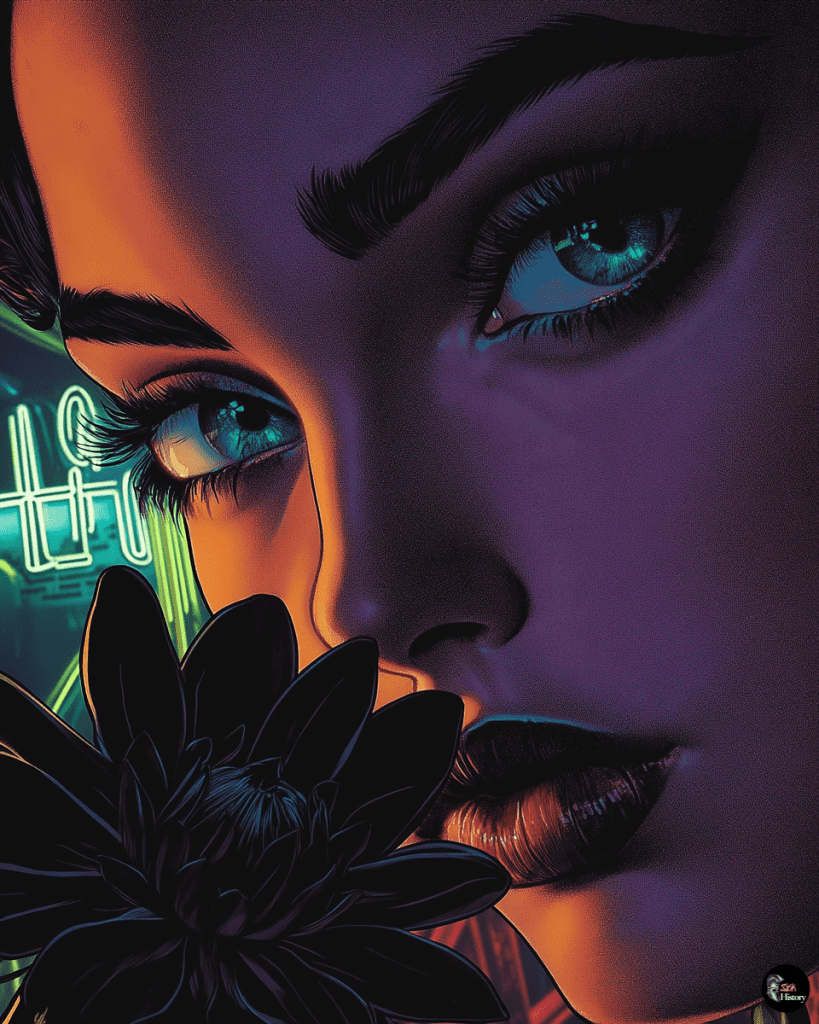The Black Dahlia murder case continues to captivate the public imagination nearly 80 years after it occurred.
On January 15, 1947, the brutally mutilated body of 22-year-old Elizabeth Short was discovered in Leimert Park, Los Angeles.
The gruesome nature of the crime and the victim’s striking appearance quickly led to intense media coverage, with Short posthumously dubbed “The Black Dahlia.”
Despite extensive investigations by the Los Angeles Police Department, the murder remains unsolved to this day, making it one of the most notorious cold cases in American criminal history.
The case has spawned numerous theories, books, and films, with suspects ranging from local doctors to high-profile figures like surrealist artist Man Ray and physician George Hodel.
The Black Dahlia case offers a chilling glimpse into post-war Los Angeles, a city grappling with rapid growth and the dark underbelly of Hollywood glamour.
It stands as a testament to the enduring fascination with unsolved mysteries and the complex interplay between crime, media, and public perception in shaping cultural memory.
The Enigma of the Black Dahlia
The Black Dahlia murder case remains one of the most perplexing and notorious unsolved crimes in Los Angeles history.
This gruesome killing captured the public imagination and continues to fascinate true crime enthusiasts decades later.
Elizabeth Short: A Life Cut Short
Elizabeth Short, known posthumously as the “Black Dahlia,” led a brief and tumultuous life.
Born in Boston in 1924, she moved to California as a young woman seeking fame and fortune in Hollywood.
Short’s striking looks and charming personality made her a familiar face in the Los Angeles social scene.
Her aspirations were tragically cut short on January 15, 1947.
Short’s mutilated body was discovered in Leimert Park, sending shockwaves through the city.
The press dubbed her the “Black Dahlia,” a name that would forever be associated with one of America’s most infamous unsolved murders.
Short’s life became the subject of intense scrutiny and speculation. Rumors and myths about her personal life proliferated, often overshadowing the real Elizabeth Short.
Leimert Park Murder: The Grisly Discovery
On that fateful January morning, Betty Bersinger was walking with her child when she stumbled upon a horrific sight.
Short’s body had been expertly bisected at the waist, drained of blood, and posed in a grotesque manner.
The crime scene shocked even veteran detectives. Short’s corpse bore signs of extensive torture, with precise cuts and mutilations suggesting the killer had medical knowledge.
Her face had been slashed from the corners of her mouth to her ears, creating a ghastly smile.
The meticulous staging of the body and lack of blood at the scene indicated the murder had occurred elsewhere.
This level of planning and skill in disposal only deepened the mystery surrounding the case.
Chronicles of an Unsolved Investigation
The Los Angeles Police Department launched an extensive investigation, interviewing hundreds of suspects and following countless leads.
Despite their efforts, the case remained unsolved, becoming one of the department’s most notorious cold cases.
Over the years, numerous theories emerged about the killer’s identity.
Suspects ranged from local doctors to Hollywood moguls.
One prominent theory implicated Dr. George Hodel, a well-connected physician with a dark past.
The Black Dahlia case spawned books, films, and endless speculation.
It became a symbol of Hollywood’s dark underbelly and post-war Los Angeles crime.
The autopsy report provided grim details, but failed to yield the crucial evidence needed to crack the case.
Decades later, the murder of Elizabeth Short continues to captivate the public imagination, a haunting reminder of a brutal crime that may never be solved.
Characters in a Lurid Tale
The Black Dahlia case attracted a cast of intriguing and sometimes sinister figures.
From potential suspects to controversial investigators, the individuals involved added layers of complexity to an already perplexing mystery.
Shadowy Figures: Black Dahlia Suspects
The Black Dahlia murder spawned numerous suspects over the years.
One notable figure was Leslie Dillon, a bellhop who drew suspicion due to his detailed knowledge of the crime.
Another was Jack Anderson Wilson, also known as Arnold Smith, who allegedly confessed to the murder before his death in a fire.
Mark Hansen, a nightclub owner who had briefly housed Elizabeth Short, also came under scrutiny.
The list of potential culprits grew to include everyone from local gangsters to Hollywood personalities, reflecting the case’s grip on the public imagination.
Dr. George Hodel: A Controversial Figure
Dr. George Hodel emerged as one of the most controversial figures in the Black Dahlia case.
A prominent Los Angeles physician, Hodel became a suspect in the 1940s but was never charged.
His own son, Steve Hodel, a former LAPD detective, later accused him of being the killer.
Steve Hodel’s investigation uncovered circumstantial evidence linking his father to the crime, including photographs allegedly of Elizabeth Short found in George Hodel’s belongings.
The theory gained traction due to George Hodel’s medical expertise, which aligned with the precise nature of Short’s injuries.
LAPD’s Role and Challenges
The Los Angeles Police Department faced significant challenges in the Black Dahlia investigation.
Led by Captain Jack Donahoe, the LAPD devoted substantial resources to the case, interviewing hundreds of suspects and following countless leads.
However, the investigation was hampered by intense media scrutiny and public pressure.
The sensational nature of the crime led to a flood of false confessions and tips, further complicating the detectives’ work.
The LAPD’s handling of the case has been both praised and criticized over the years.
Some argue that corruption within the department may have impeded the investigation, while others commend the extensive efforts made to solve the crime.

